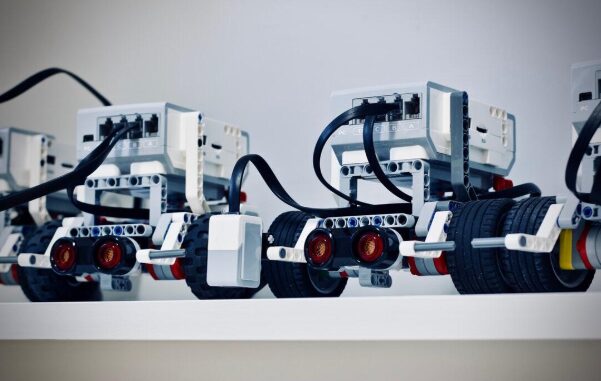The Future of Robotics in STEM Education

Ever thought about how robots can help students learn better?
Robots make science, math, and tech fun and hands-on. Students don’t just read from books-they build things, try ideas, and fix problems. This helps them think, ask questions, and work in teams. Using robots in class shows how things work in real life.
It also helps students grow skills they can use later in life. They learn by doing, which makes learning easier and more fun. Robots make learning feel like play. Want to see how this can change the way students learn? Keep reading!
Hands-On Problem Solving
Solving problems with your hands helps ideas come to life. With robotics, students move past guessing and start testing. They build, try, and fix things until they work. This process helps them think clearly, focus on each step, and learn from mistakes.
It also builds patience and sharp thinking. Instead of just talking about a problem, students work through it with real tools and moving parts. They begin to understand how things connect and why each part matters.
Over time, they get better at thinking through challenges, which helps in class and beyond. Tools and kits from groups like Studica Robotics make this kind of learning possible, giving students what they need to try, test, and solve real problems.
Learning by Doing
Picking up parts and putting them together can teach more than any book. With robotics, students stay active while learning. They don’t just listen-they touch, move, test, and see what works. This way of learning helps ideas stick and makes each lesson feel real.
Students remember more because they try things out on their own. They also feel more confident as they watch their projects take shape. Even small actions, like fixing a tiny error, bring a sense of growth.
This kind of learning builds curiosity and helps students stay focused. Over time, they grow stronger in thinking, planning, and creating-all by doing. Through these steps, students also begin to explore and learn new skills without even knowing it.
Boosting Interest in STEM
Bright lights, moving parts, and easy controls can turn a quiet class into a fun place to learn. Robotics makes science, math, and tech more exciting. Students get to see their ideas come to life, which keeps them curious and ready to try more.
Hard subjects can feel easier and more fun with robots. Even kids who didn’t like STEM before might start to enjoy it. Robots help students feel proud of what they make, and that feeling can grow.
Over time, more students stay interested and keep learning. By making lessons fun and full of action, robotics helps more students enjoy STEM and stay excited about school for a long time. This kind of learning can make a big change.
Building Teamwork Skills
Sharing ideas, solving problems, and working together help students grow in more ways than one. Robotics projects often need more than one person, so students must talk, listen, and help each other.
Each person plays a part-some build, some test, and others guide the group. This makes teamwork a key part of learning. Students learn how to take turns, handle problems, and respect different thoughts.
These group tasks also build trust and support, which can help students feel more confident. Working with others on a shared goal teaches students how to stay patient and focused. Over time, they see that big tasks can feel easier with teamwork. These skills can help in school, at home, and later in life.
Teaching Coding in a Simple Way
Watching a robot move after typing just a few lines of code can be exciting. It helps students see how coding works in a fun and easy way. Instead of long lessons or hard words, students learn by trying small steps that lead to big changes.
They write simple commands and watch the robot follow them. If something goes wrong, they can fix it and try again. This makes coding feel less scary and more like a fun puzzle.
Over time, students start to understand how computers think. They learn how to give clear steps and follow a plan. Robotics helps make coding simple, showing that even big ideas can start with just a few easy lines.
Giving Instant Feedback
Robots give quick answers, helping students learn faster. If a robot doesn’t work as expected, students can see the problem right away and fix it. This instant feedback lets them change their ideas without waiting for a teacher.
They can understand what went wrong and learn how to fix it. Instead of waiting for long corrections, students learn from mistakes right away, which helps them move forward.
Fast feedback makes it easier to try new ideas and keep going. It also helps students stay focused because they know quickly what works and what doesn’t. This way, they feel more confident and want to keep learning and improving.
Preparing for Future Jobs
Building and working with robots helps students get ready for future jobs. Many jobs today need skills like solving problems, designing, and using technology. Robotics teaches these skills in a fun way.
As students build robots, they learn how to plan, test, and fix things, just like in real jobs. They also learn to think creatively and pay attention to details.
These are the skills employers need in many fields, like engineering and tech. By working with robots, students get ready for many different careers. Robotics makes learning exciting and helps students be ready for success in their future jobs.
Bringing Subjects Together
Robotics connects many subjects like math, science, and engineering. As students work with robots, they see how these subjects work together in real life.
For example, they use math to measure and calculate, science to understand how robots move, and engineering to build them. This shows students that learning isn’t just about separate subjects-it’s about how everything fits together. Robotics helps students see the bigger picture and how skills connect.
Shaping Tomorrow’s Innovators: The Power of Robotics in STEM Education
Robotics is transforming STEM education by making learning more interactive and engaging. It connects different subjects, builds key skills, and prepares students for the future.
By working with robots, students gain valuable hands-on experience and a deeper understanding of how things work. As robotics continues to evolve, it will remain a powerful tool in shaping the next generation of innovators and problem-solvers.
Did you find this article helpful? You can check out our website for more awesome content like this.




